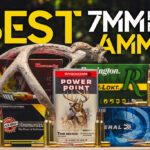
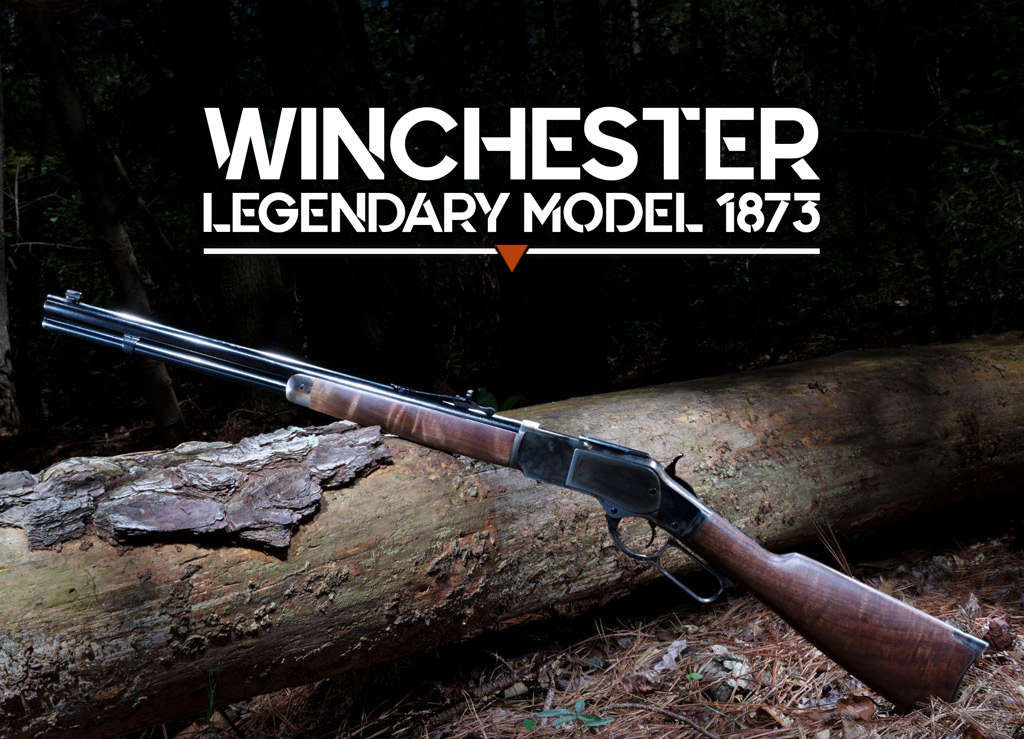
This is the story of the Winchester Model 1873. It’s the gun that won the West, and has been the trusted companion of mountain men, homesteaders, hunters, and gun enthusiasts for over a century. This article highlights the history, features, and impact of this American treasure: the Winchester ’73.
The Winchester 1873 was proven by the frontiersmen, with rapid fire and reliability becoming the primary reasons for its popularity. Beyond the down-to-earth usability of the weapon, as years went on, the gun received several nods that would cement it into the firearm hall of fame.
But let’s pull back the curtains and look at this gun for what it is – a tool many relied upon for food and protection. Since it became a trusted companion, it’s easy to understand the Model 1873’s historical significance and how it’s grown in the years since its birth.
History Of The Winchester Model 1873

Winchester Model 1873: The lever-action rifle that tamed the Wild West.
Oliver Fisher Winchester began his work manufacturing dress shirts. After achieving some success, he purchased the Volcanic Repeating Arms Company. It would soon take on his name and become the Winchester Repeating Arms Company.
Many who know Winchester have probably heard about the Henry Repeating Rifle. Benjamin Henry, Winchester’s factory superintendent, designed it; and both it and the 1866 preceded the 1873.
As we’ll see, much of the 1873’s “DNA” is directly linked to these past lever-action guns. While those guns may have been the genesis, a few key upgrades to the Model 1873 skyrocketed the firearm’s popularity. These features injected it into the veins of firearm history and gave it that recognizable title: The gun that won the west.
The 1873 rifle would prove popular right out of the gate, offering many options for customization, reloading, and easy upgrades. For various reasons, including its average power on paper, the US Military never officially adopted the Winchester 1873 as a standard firearm. However, they did purchase them from time to time, and the rifle became popular with peacekeeping forces like the Texas Rangers.
But why did this rifle rise to the top of western superstardom?
What Made It So Popular?
There are three main reasons the Winchester 1873 became iconic. In no particular order, it appears these benefits created a synergistic effect on the popularity of the firearm.
We’ll look at the following reasons the 1873 became so popular:
- Capable firepower
- Unwavering reliability
- Customization and usability
Now, let’s look at these aspects a bit more closely.
Firepower: Winchester Model 1873
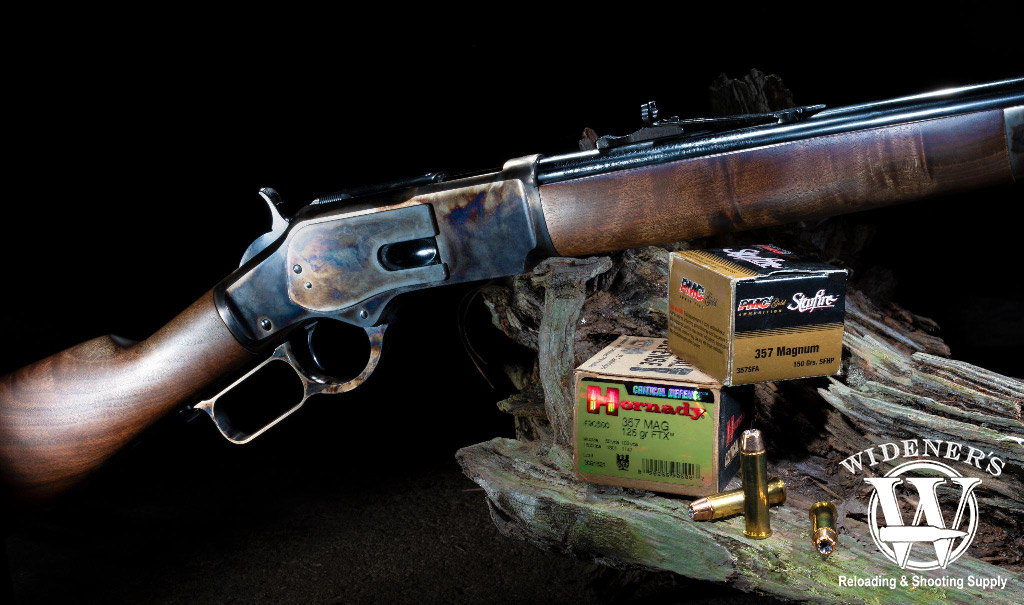
The Model 1873 was originally chambered in .44 Winchester, but modern reproductions have several caliber options.
The 1873 isn’t a particularly powerful cartridge. However, the weapon still stood out, not for the speed of the bullet, but for its ability to fire rapidly and stay on target. Simply put, the Winchester 1873 offered efficient power.
Part of the slight increase in power over previous models is due to it being the first centerfire-capable rifle from Winchester, allowing the gun to slightly increase it velocity. Not only that, but the Winchester also came in the .44 Winchester, or 44-40 as it’s now known. The 44-40 was the do-all round of that era, giving the shooter increased flexibility. Was it a bazooka? No. But it could do whatever you asked it to do.
Legendary Reliability
The Winchester 1873 was also ultra-reliable. The easily removable side plate was a unique aspect of the Winchester 1873 vs. previous models. This plate gave the shooter quick access to remove jams, clean the firearm, or perform any other field service.
Though the 1873 didn’t commonly jam, this side plate allowed the shooter to access the interior of their firearm when needed. Further, the 1873 had a sliding dust cover on the top of the gun, preventing the intrusion of dirt, sand, or pebbles into the rifle’s mechanics.
As another point for reliability, the 1873’s receiver was initially built with iron. That was somewhat of an upgrade from the brass on previous models, like the 1866. Later, Winchester constructed the 1873 out of stainless steel.
What about the practical and customizable side of the 1873?
Practicality & Customization
The 1873 offered shooters just about anything they wanted at the time. As the years went on, they provided more and more. The Winchester came in several barrel lengths: 20 inches, 24 inches, and a longer model at around 27 inches. However, they also took special orders, made longer or shorter barrels, added engraving, installed rings for shoulder straps, or upgraded the sights.
Soon after the success of the Winchester 1873 and the 44-40 cartridge, the market gave shooters something extraordinary – new sidearms compatible with the same round. The Colt sidearms, which chambered the 44-40, are some of the most notable. The frontiersman or soldier only needed to carry one ammo belt, with the ability to feed his rifle and revolver.
Finally, the centerfire cartridge was reloadable, and Winchester sold kits for reloading in the field. This greatly improved the practicality of the weapon for a frontiersman.
Specs & Design: Winchester Model 1873
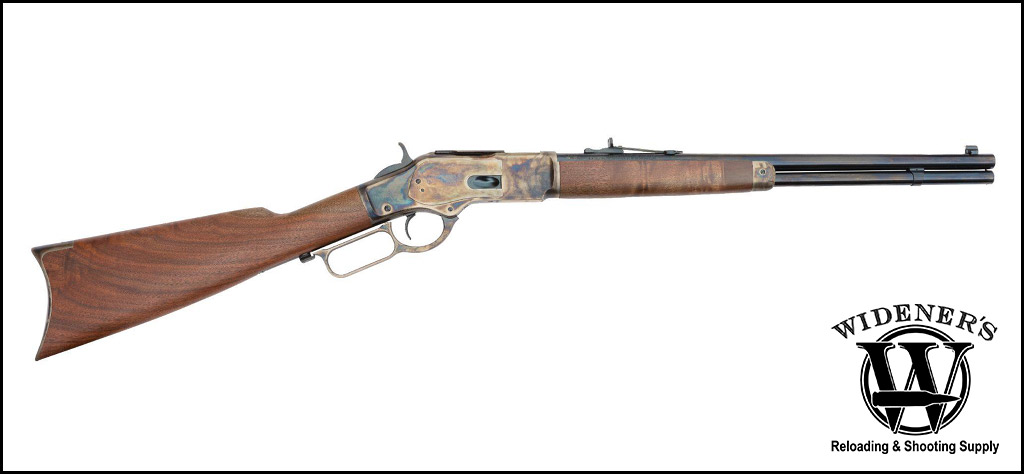
From 1873-1923 Winchester manufactured over 700,000 copies of the Winchester Model 1873 rifle.
Walking through the specs will provide more insight into the personality of the 1873.
Here are the Model 1873 specs we’ll cover:
- Caliber
- Action and Barrel
- Capacity
- Stocks and grips
- Special editions
We’ll go into some history in these sections and then talk about the notable people who wielded the 1873 and how the gun still lives on today.
The Origional Caliber
Most 1873s fired a .44-40 (40 represents the amount of powder in the cartridge) or .44 Winchester as it was known at the time. As is common now, they named rounds and loads after their manufacturer, but that doesn’t mean the rounds were exclusive to those companies.
The copper Henry bullet cases would sometimes burst. They made the new Winchester case with brass, which was stronger. The cartridge also has a little neck, improving the seal against the wall of the barrel and giving the round amplified pressure.
The .44-40 was, essentially, a large handgun round. There were also several other calibers available. However, these didn’t hit the market until a few years later and ended up far less popular than the 44-40.
In 1879, the .38/40 became available for the Winchester 1873, and in 1882 they added the .32/20. While these are the three main calibers attributed to the 1873, there were likely more.
Lever-Action Rifle
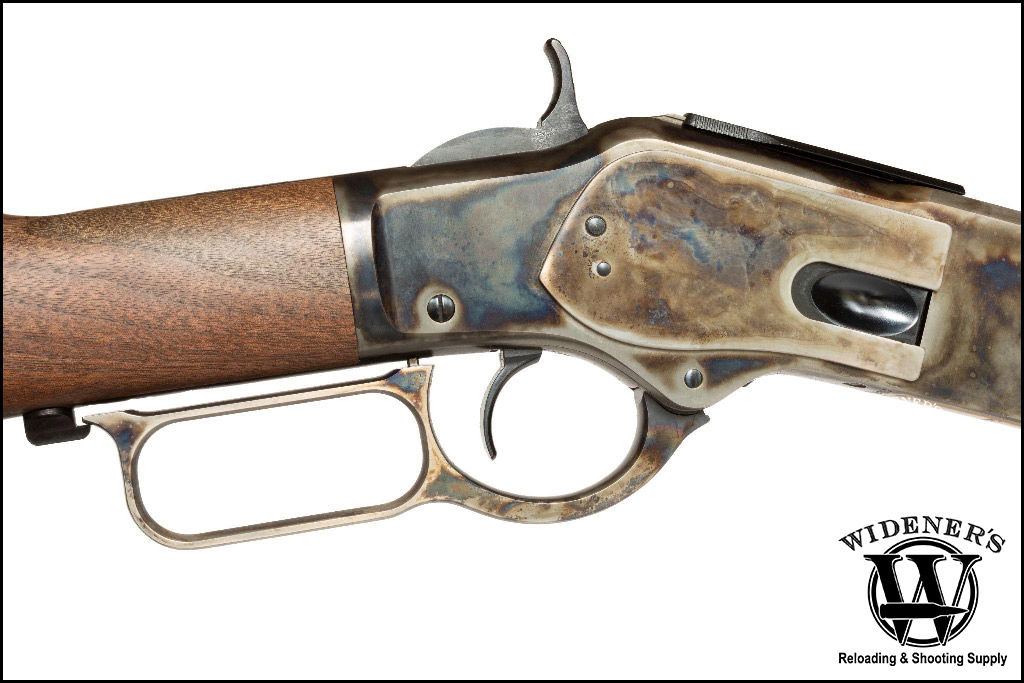
Simple and reliable. The toggle action of the Winchester Model 1873 is the same as the 1860 Henry.
The Winchester Model 1873 is a lever-action gun. The toggle action is the same as the 1860 Henry, forming a secure bolt in the closed position. As mentioned in the reliability section, the 1873 had a sliding dust cover on top of the rifle, protecting the action from dust and grime.
The Winchester 1873 also continued the popular side-positioned magazine feed, which proved more practical than a bottom-feed. The Winchester model 1873 24-inch model was known for its octagonal barrel. The shorter models would use a partial octagon, and the longer model would use a round barrel.
Overall, everyone knew the guns as accurate. The barrels were often quite thick and beefy, giving the rifles some weight.
Capacity Considerations
The capacity of the rifle changed based on the size of the barrel. However, Winchester also offered custom magazines, with some explicitly shortened to allow for a bayonet.
The high capacity of the firearm wasn’t necessarily a new thing. However, it was still a substantial benefit. It offered the user a gun that, though not as powerful a load as others, made up for this with rapid and reliable shooting.
The general capacity of the 1873 models:
- The 20-inch model came with a 12-round capacity
- The 24-inch model came with a 15-round capacity
- The 27-inch had a 17-round capacity.
- Custom models, some with shorter magazines for bayonets
As you may have noticed, the running theme of the 1873 is being highly customizable. Though there were several standard models, the 1873 was available in barrels as short as 15 inches.
Perhaps individuality is embedded in the American way and is why customization is so popular for homes, cars, and guns. Whatever the case, the customization options for the 1873 never hurt its popularity.
Notable Features
The stocks usually came in shiny hardwood with a curved butt plate and more pointy tips. However, some stocks were more shotgun-style, with flatter ends. There were more accessories, too, including fixed rings for straps. Cowboys and frontiersmen would use these to hang their firearms from their shoulders or saddles.
The walnut stock was common, and it had a forward grip. While this forward grip was already being used on some rifles prior, it’s interesting to note that only some of the lever actions of those days had them. This style would create minor issues with the build-up of heat on the barrel. The excellent stock and forward grip allowed for comfortable handling.
Special Editions: Winchester 1873
For a time, Winchester 1873s marketed some guns as 1/1000 or 1/100. These were sold with a slightly fancier design and were known to be extra accurate.
The story goes that, while testing these firearms, they would set aside the barrels that proved to be especially accurate and sell them as limited editions. Whether this is true or just a story that circulated to boost marketing is unknown.
However, they discontinued these special editions, as they were somewhat counterintuitive. People became less enthusiastic about the already effective standard edition – everyone wanted the special models.
Famous People Who Used The Winchester Model 1873
The 1873 was a working gun, but it also became a Hollywood icon. The 1873 was a popular firearm of the notable Texas rangers, including the renowned Buffalo Bill.
The Winchester 1873 starred in several big movies, including one named after the gun: Winchester ’73. The film stars Jimmy Stewart, who participates in a competition to win the rifle.
However, maybe it’s too easy to give credit to a celebrity for its fame. Certainly, there’s nothing like a boost in publicity. Still, the truly notable people using the 1873 were likely our great-grandparents – those who relied on this firearm for everyday living. These hardworking folk have certainly passed on their passion for this weapon.
The Legacy Lives On?
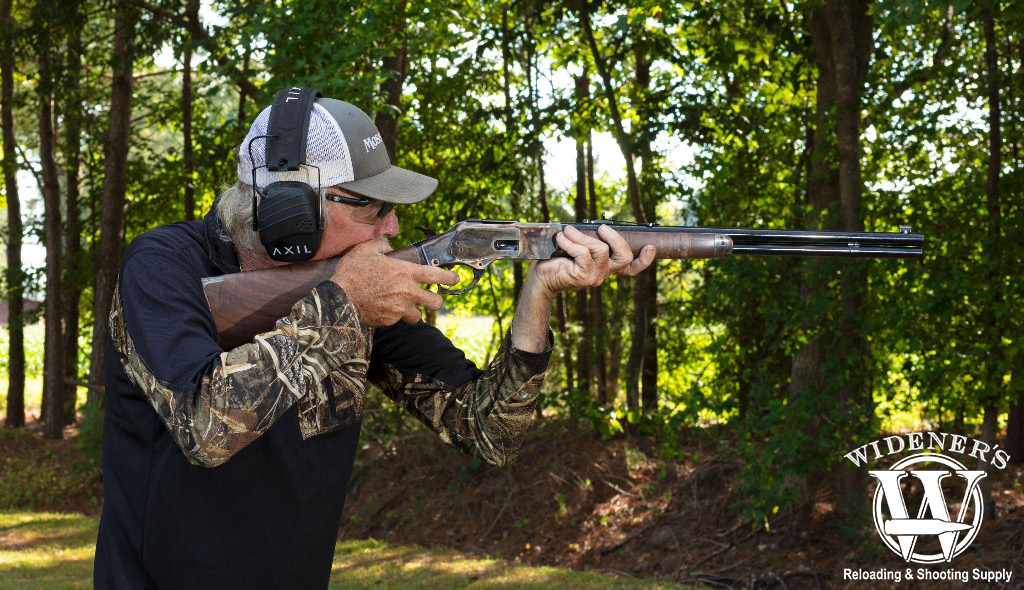
More than 150 years later, the Winchester Model 1873 remains a popular lever-gun design.
Some might think the 1873 is nothing more than a relic, but this isn’t accurate. There are several ways that the 1873 lives on today that go beyond its storied history.
First, the 1873 lives on in its design. While we can’t give the 1873 credit as the first lever-action gun, we can say it certainly codified the style’s popularity. Even today, modern firearms built for modern use incorporate a similar lever action style. These firearms still share the speed, reliability, and accuracy the 1873 had over one hundred years ago.
Second, cowboy, single-shot, or western-style shooting competitions are still very popular in some parts of the United States. These competitions sometimes feature modern replicas of the 1873, testing shooters’ ability in accuracy and speed.
Finally, many quality reproductions are still made and used for hunting and sport. Some of the most common remakes are from Uberti, and Winchester themselves.
Is The Winchester Model 1873 Discontinued?
The Winchester 1873 went into production over 150 years ago starting in 1873. After making over 700,000 units, Winchester discontinued the rifle in 1923. Why…who knows? It might have kept going in a more popular caliber, but firearms were rapidly becoming more powerful. The original design of the 1873 was insufficient to handle increasingly high-powered (and pressured) centerfire rounds.
However, as noted, the 1873 still lives on in the DNA of many manufactured lever-actions of today. It established an expectation of ruggedness, reliability, functionality, and American history. With suitable rounds, the original Winchester 1873 can be fired with the same speed and accuracy as they did nearly fifteen decades ago.
If you’d like to learn about more iconic firearms, look at our overview of the Ruger Marlin 1895.


